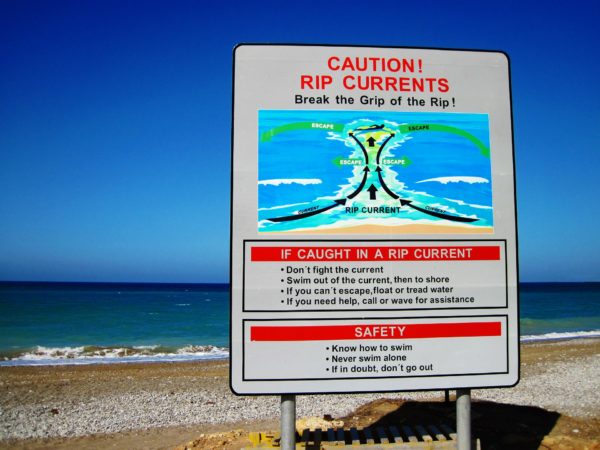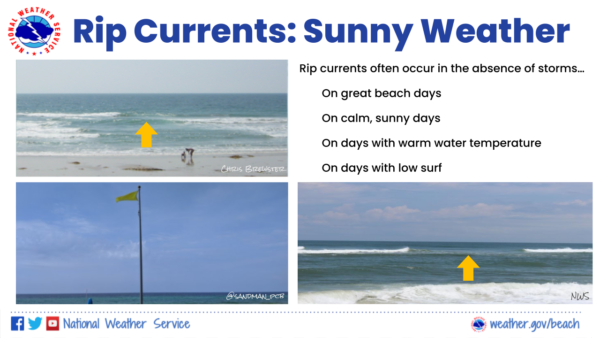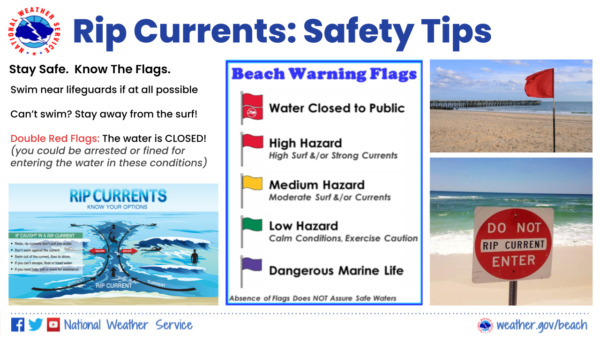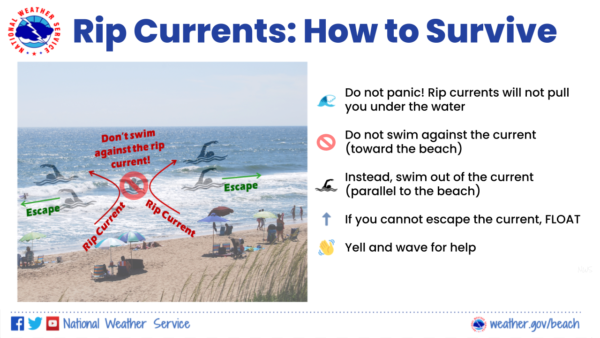Gulf Coast Rip Current Awareness Week — Day 3: Survive A Rip Current

Staying safe at the beach means knowing the dangers BEFORE you head out! Great beach weather does not always mean it’s safe to swim or play in shallow waters. Rip currents can form on calm, sunny days.

Are you planning a beach trip soon? We look forward to you visiting our wonderful beaches, but there are some days that you will want to say out of the water due to rip currents. Do you know what to do if caught in a rip current? These tips could save your life…

Rip Current Safety Tips to KNOW BEFORE YOU GO:
- Always check the local beach forecast before your toes hit the sand.
- Look for the beach warning signs and or beach flags (often located on or near the lifeguard stand).
- If you are unsure about the water conditions, ask a lifeguard.
- Always swim near lifeguards and know how to swim before you venture in.
- **Not all beaches have lifeguards, so be extra careful on unguarded beaches.**
- When you go in the water at an unguarded beach, always bring flotation.
- When in doubt, DON’T GO OUT – Avoid swimming if there is any question whether there is a rip current.
Did you know that rip currents account for 80% of beach rescues? Rip currents can be deadly if you do not know what to do. This knowledge could save your life or the life of someone else.

Rip Current Survival Guide:
- STAY CALM. WAVE. YELL. FLOAT.
- DON’T PANIC – Staying calm may save your life.
- Good swimmer? Swim parallel to the beach until you clear the pull of the rip current.
- Not a skilled swimmer? Relax and flip on your back to float (floating conserves your energy)
- Always wave and yell to get the attention of the lifeguards.
- REMEMBER – Don’t fight the rip current. Instead, swim left or right.
- Do NOT swim next to jetties.
- Swimming in a pool is not the same as swimming at a beach with crashing waves, winds, and dangerous rip currents.
- Swim with a buddy!
- Swim near a lifeguard. The chance of drowning at a beach protected by USLA affiliated lifeguards is 1 in 18 million!
See someone in trouble in a rip current at the beach?
- Do not go in after them. Instead – call for help!
- If no lifeguard is available, throw them something that floats, but do NOT try to make the rescue yourself. Remember, even lifeguards only attempt a rip current rescue using a flotation device.
Category: ALL POSTS, Met 101/Weather History















